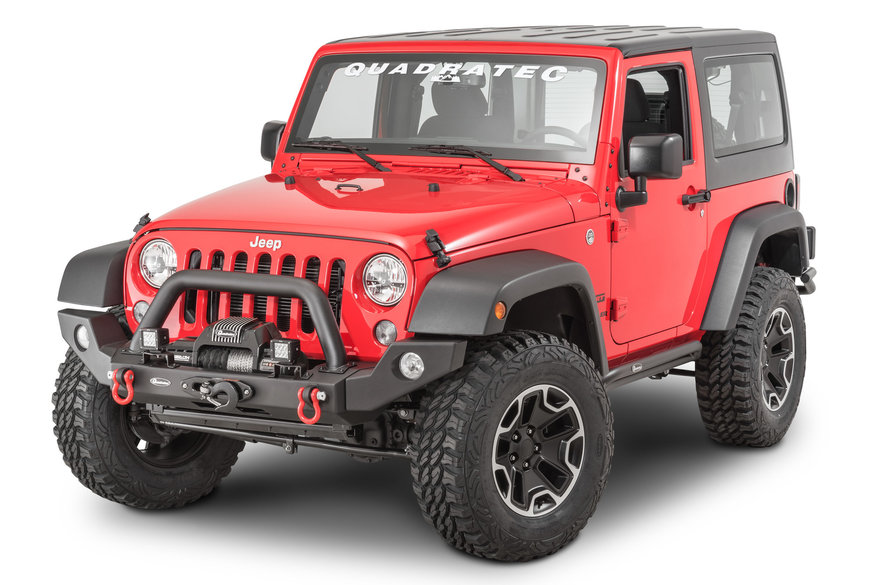by Terry Pritchard
Staff Writer
You’ve battled through negotiations, claimed victory, and now the spoil of your hard-fought battle sits parked in your driveway looking as practically perfect as you dreamed. Or maybe you've had your Jeep for ages. But however long, or whatever the reason, that aspect of always wanting to add or change the thing is constant. And incredibly exciting – whether from 2-door Sport to 4-door Rubicon.
Then the questions begin. What to do next?
With the availability of everything on the Internet, it is easy to fall down the rabbit hole and follow forum post after forum post about how your mods should involve a hardcore 4” suspension lift, new designer wheels, 35” off-road tires, and a 10,000lb winch? Parts that will get you out on the trail as soon as possible whether you are ready or not? Or do you shun any intense modifications, instead focusing on smaller ones to improve the quality of your daily riving life. To be content with the vehicle mostly ‘as is’. Then again, what about finding some moderation and choosing something in between those two options?
It can be confusing and overwhelming.
This can also be intimidating no matter how long you've owned your vehicle, which could lead to frustration.
What you should know is that your Jeep path never has to be preset and more often than not, that last option works very well for nearly every Jeep owner. By all means, if you have the knowledge, desire, and resources, to get your hands dirty immediately and build that next great trail-crushing Wrangler, then go for it. Have a blast! But if you don’t — if you are unsure what kind of steps to take in this larger Jeep world – then a bit of caution should definitely rule as you get to know your vehicle.
“It's easy to fall into the trap of some off-road shops where they say they have to put $20,000 into your vehicle before taking it (out),” says Kyle Buchter, President of Off-Road Consulting.
Buchter advises any Jeep owner, regardless of how long they've had their vehicle, to take a basic off-road training class to learn what the thing can do and then decide what they want to get out of ownership.
“Are you planning to off-road once a month or once a year,” he says. “Is this going to be your daily driver or toy? That determines where you need to go with modifications and upgrades. Always build the vehicle to fit your lifestyle.”
Here is our list of top-10 affordable and ‘Essential’ modifications, in our experience, that can easily and safely answer the ‘what can I do with my Jeep?’ question. There certainly are plenty of other great mods out there – just like there are opinions. And, like we said before, your Jeep road never has to be preset or ending. But over the past 30-plus years we’ve found this list a great springboard into the Jeep Life.
Also keep in mind, if you purchased your Jeep used, it may already have one (or more) of these modifications in place. If so, make sure that the part(s) are in good working shape or are something you like and want. If not, then remove and replace it with something in line with your taste.
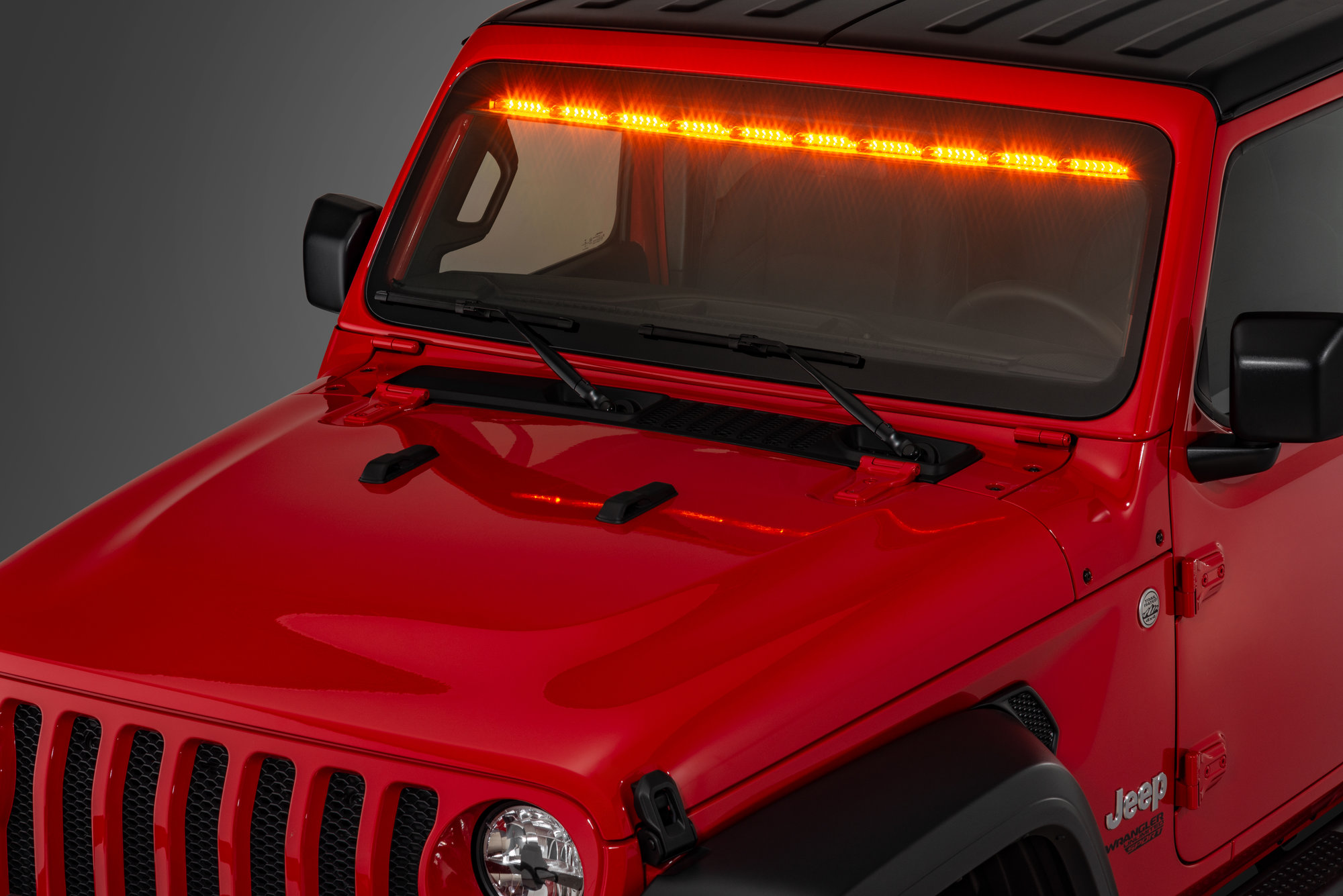
Lighting
Lighting for your Jeep comes in many forms. It is not just new headlights but also other lighting components that could enhance visibility when the sun goes down. There are many types of lighting such as fog lights, pod lights and lightbars and of course, headlights.
The original, factory headlights for years have left so much to be desired thanks to an underpowered, dim halogen lamp. Sometimes you don’t even realize how underpowered those lights are until you check out an LED lighting system.
LEDs, or Light Emitting Diodes, are some of the best modifications you can do simply because their light output is nearly double the factory halogen headlight output. Better yet, despite this powerful light, the amp draw is significantly less than what the factory lights require.
More power, less amp draw. And because of the advancements in technology over the past few years, they are more affordable as well. So, it’s no wonder LED have jumped to the front of the line over other great options like High-Intensity Discharge and Xenon.
Now, within the spectrum of LED upgrades, there are essentially two types of headlights, reflector style and projector-style housings. Both can be great options and really becomes a personal preference. The difference lies in how they project the light and the output pattern of light you see on the road surface.
Reflector-style LED headlights look similar to the factory light with a lens and mirroring reflector or reflectors at the back of the housing. The LEDs are positioned in the center of the housing and bounce the light off the reflector. These lights have different reflectors in the upper and lower section, for low and high beams respectively.
Projector-style LED headlights have a very distinct appearance. The LED is positioned behind a lens and cut-off shield. The lens produces a more focused beam, and the cut-off pattern of the light is much sharper than the reflector style. This creates a more even and exact pattern of light on the road or trail. Projector-style headlights use separate LED and projector lenses for high and low beams. Some brands even use multiple lenses to disperse the light for a better peripheral view of the road ahead.
Of course, with the additional lenses, the cost of projector style lights is usually slightly more than a reflector style LED. However, both offer great advantages over the stock factory Jeep lights, so really it just comes down to personal preference in style, look, and how much cash you're willing to shell out.
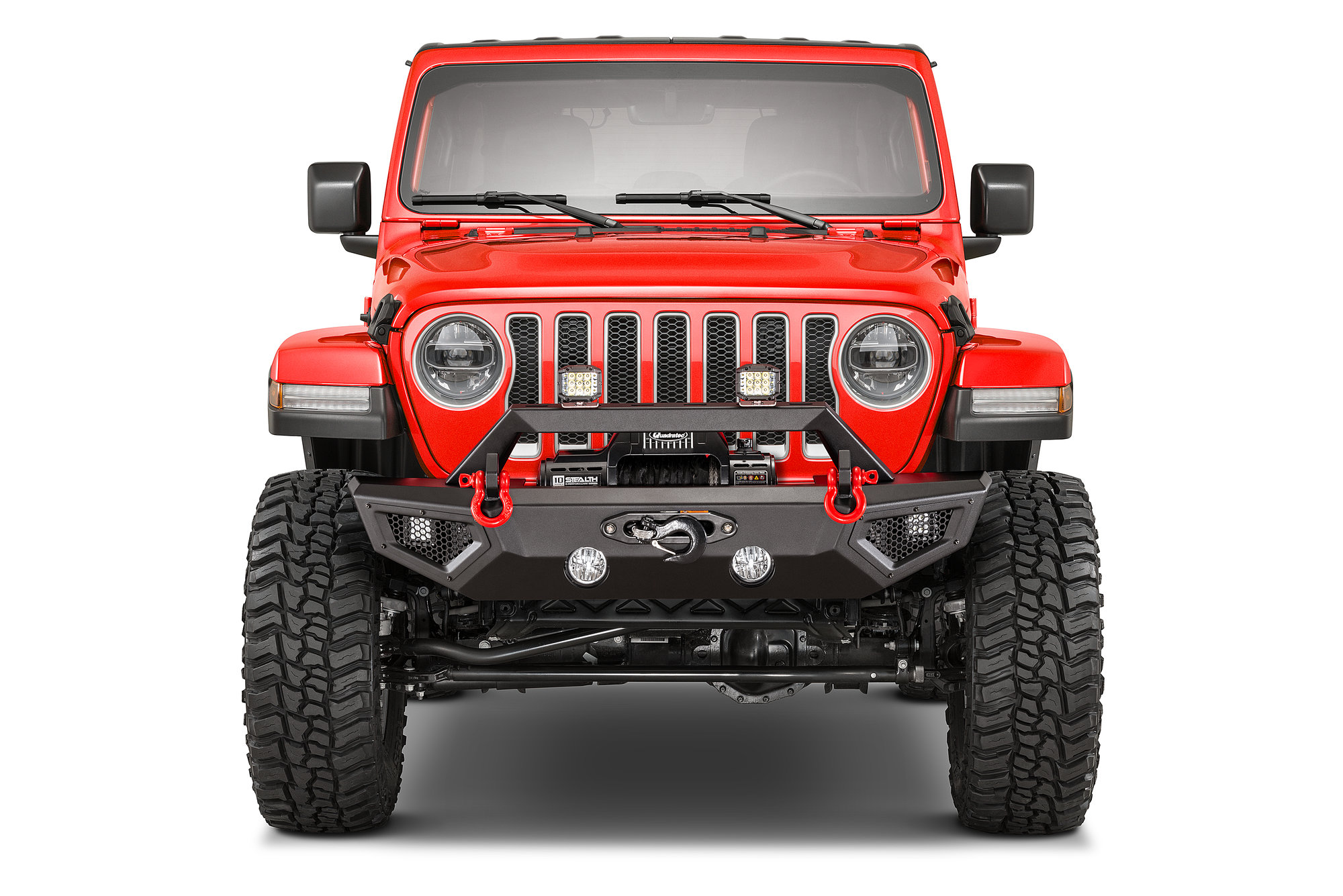
Bumpers
Why are bumpers on this list, you may ask? Doesn’t my Jeep already have front and rear bumpers? Well, yes it does. But the stock plastic bumpers are nothing more than a cosmetic covering over a purely utilitarian steel subframe. So, for just about anyone, heavier-duty front and rear bumpers are one of the first modifications completed. Not only for off-road use but for everyday protection.
A strong bumper can provide the security of knowing your vehicle is protected from front impacts on the road or on the toughest off-road adventure. Most bumpers are designed to be a bolt-on addition utilizing the original frame mount points. Some bumpers are very simplistic in nature. While others have many features such as built-in fog light mounts, over-rider bars, recovery mount points and accessories attachment locations.
Quadratec QRC bumpers, as well as other aftermarket brands, can utilize several different front designs like:
- Stubby – a shorter bumper about grille-width in length that allows for greater articulation from the front axle.
- Full Width – a bumper that is very similar in length to the stock bumper and provides protection from corner to corner.
- Winch-ready – a bumper that is designed to accommodate a winch without additional materials or parts.
- Modular – a bumper that has various optional components which can be removed or added to meet your needs.
Aftermarket rear bumpers also are available in several different styles, and for most first-time Jeep owners, ones having a strong tubular design, or full-length solid ‘rock’ or ‘super duty’ style, and even a modular type can certainly do the trick without crushing the pocketbook. For those who plan on adding larger tires down the road, some rear bumpers even will add a tire carrier component.

Entry Guards
The front door sills of your Wrangler are one of the most trafficked areas and have nothing in place to protect the paint against scuffs and scratches. There is protection on almost every major part of your Jeep and yet, this busy area has nothing.
You won’t need a skid plate for your lower door area. You need some low-tech and affordable door entry guards. These guards install easily with most brands using a 3M adhesive to attach. Even though most entry guards will utilize a thermoplastic material, some are available in a more premium material like aluminum or stainless steel to protect the door sill and paint. Whether you plan on daily driving or venturing off-pavement, Jeep entry guards should definitely be considered as a quick, easy and affordable modification.
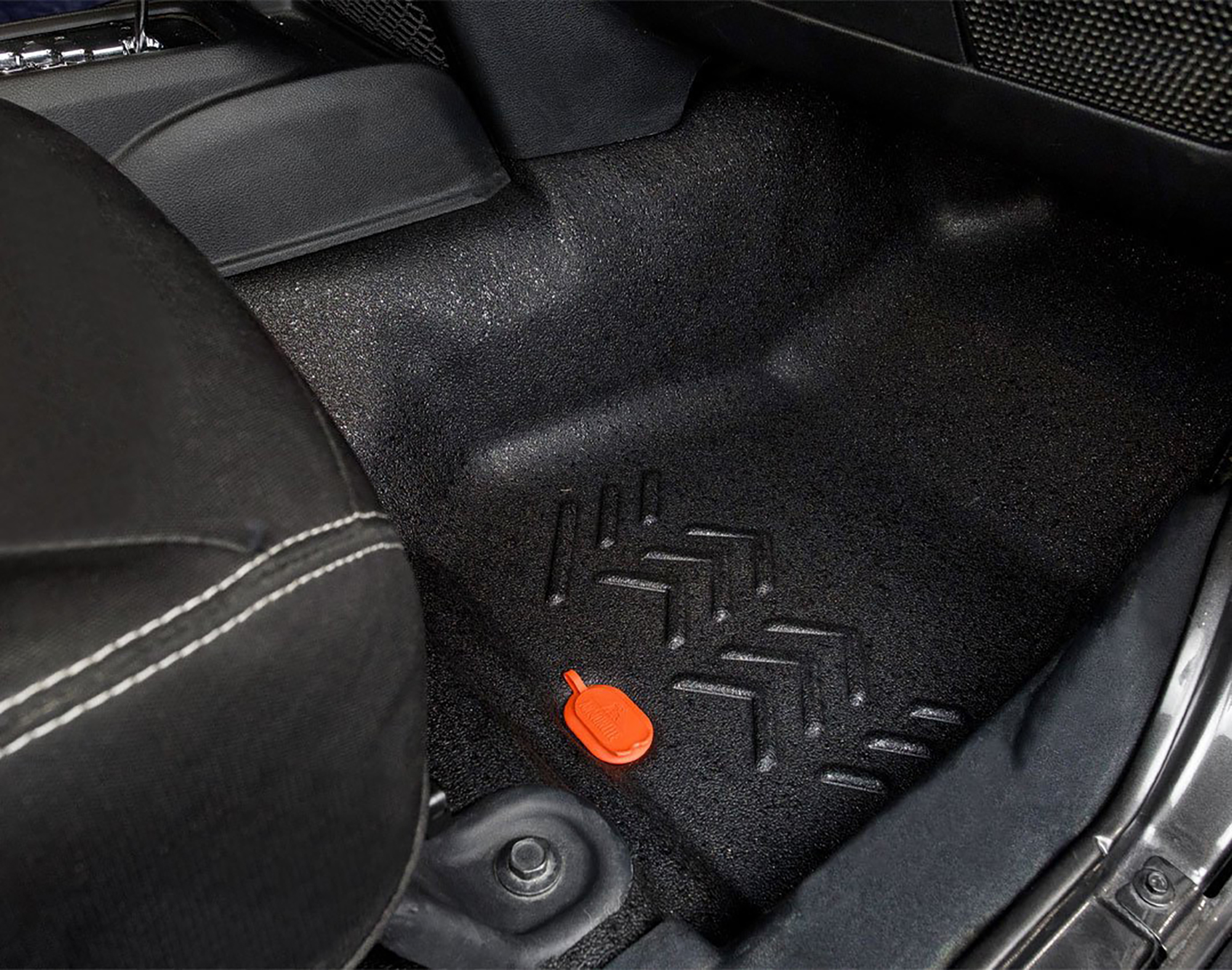
Floor Liners
We spend more and more time in our Jeep and most people consider their Jeep’s interior as a second home. And a great way to easily keep that second home ‘mess free’, especially in this on-the-go age, is some sort of way to protect the floor of your Jeep.
There are two distinct approaches to accomplishing this: Floor liners and a complete flooring system.
Now, there are a few different types of floor liners out there such as:
- Carpeted mats that are stain-resistant and help guard against the everyday wear and tear your Jeep interior will see.
- Rubberized slush mats that have a grooved body to help trap moisture like mud or snow.
- All-weather heavy-duty liners that utilize a lipped outer edge and either a molded thermoplastic, or stain-resistant carpeted base to form a protective barrier - all while remaining easy to clean.
- Trail tough molded polyethylene liners which have a deep ‘tire type’ tread pattern and raised edge to totally protect from everything like mud to grease, while also remaining simple to clean.
Armorlite is a complete flooring system made in America. The Armorlite system is a rugged stand-alone flooring that totally replaces floor liners and even original carpeting in your jeep. Armorlite provides a multi-layer design that provides water protection, resists stains, thermal and acoustic dampening. The whole setup is relatively easy to install and handles everything thrown at it. Additionally, the flooring is incredibly easy to clean because of the water protection and built-in drain plugs.
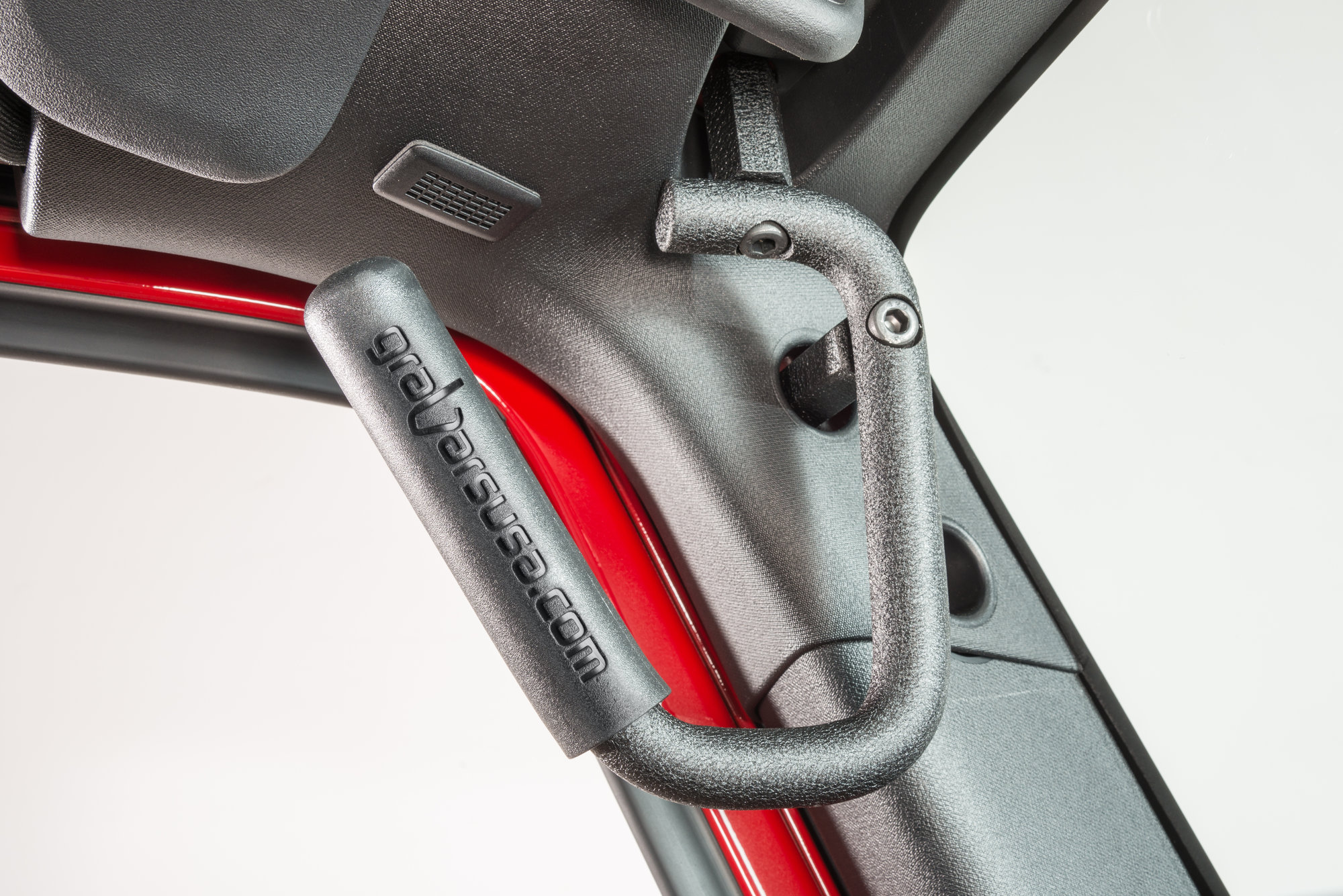
Grab Handles
Chances are you’ve previously owned a vehicle that had some type of handle above the passenger side and rear doors. You know the ones. The thing you clutched with a passion the turn got a little too sharp or a little bumpier than expected. Yet in a Jeep, with its roll cage between you and the top, that kind of top-mounted handle isn’t very feasible.
However, a Jeep’s roll bar offers a better-type handle solution – and so can the vehicle’s A-pillars. With a Jeep, who needs a top-mounted grab handle when you can securely attach what you need to the roll cage or on the pillar. This way not only can you grab the handle when needed, you can even use it for getting in and out of the vehicle.
From simple nylon handles to deluxe nylon versions with a foam grip, to heavy-duty paracord, there are many affordable versions out there that have a hook and loop solution to strap around the roll bar and provide a quick, intuitive place to grab when the need arises. Or for a stronger option there are steel handles that bolt directly to your Jeep’s A-pillar like the GraBar.

Hood Latches
Before the newer Wrangler JLs and Gladiators, the hood secured with the factory latch would move and flutter at an alarming amount. Sometimes crosswinds could really get that hood moving and flapping in a way that can make you feel like your hood will tear off at any second. The reason behind this is simply that the factory latches use a soft, stretchy rubber that isn’t able to keep the hood securely in place at higher speeds.
While the odds of your hood actually flying off because of latch failure are very low, it can certainly be an unsettling and annoying distraction while driving. This is where aftermarket latches shine. Besides offering a few different ‘beefier’ ways to customize how your hood connects, these latch options utilize stronger materials to ensure that your hood stays in place during all driving conditions.
Some latch options even offer locking security, providing you additional peace of mind if you ever add other aftermarket items inside your hood (such as batteries or air induction systems). And these lockable latches are available for older TJ (97-96) Wranglers should have that Jeep.
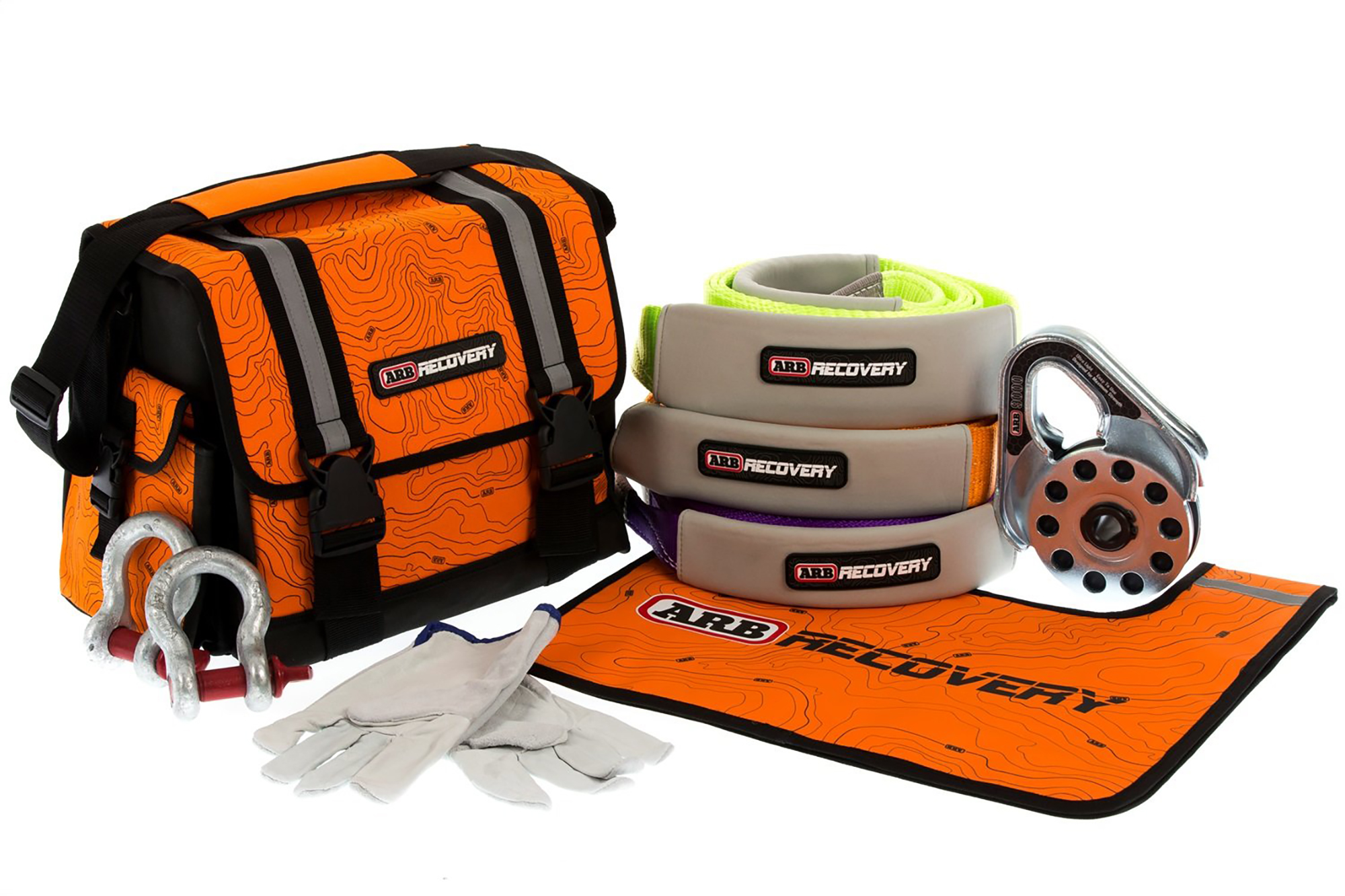
Recovery Gear
Whether your plans include off-roading, or simply pavement driving, it is always a good idea as a new Jeep owner to upgrade the recovery capability of your vehicle. This doesn’t necessarily mean springing for the latest, massive recovery winch with synthetic line. Although having a 10,000 pound Quadratec Stealth Winch on your front bumper is an amazing modification, Off-Road Consulting’s Kyle Buchter says simple recovery items and how you vehicle responds when using them – can be everyday lifesavers when the need arises.
“Things like tow or recovery straps, gloves, a couple of D-rings,” he says. “Then getting to know the vehicle, learning how the systems work and how the Jeep responds. Knowledge, understanding and the ability to make smart decisions is one the best things you can do.”
Most of the ‘Essential’ recovery products good for new Jeepers are included in many winch accessory kits – things like gloves, d-rings, or recovery straps which are designed to stretch when used, providing kinetic energy to pull a vehicle from obstructions like sand, mud or snow. It can be convenient to purchase one of those accessory or recover kits. But you can just find and purchase individual items as well.
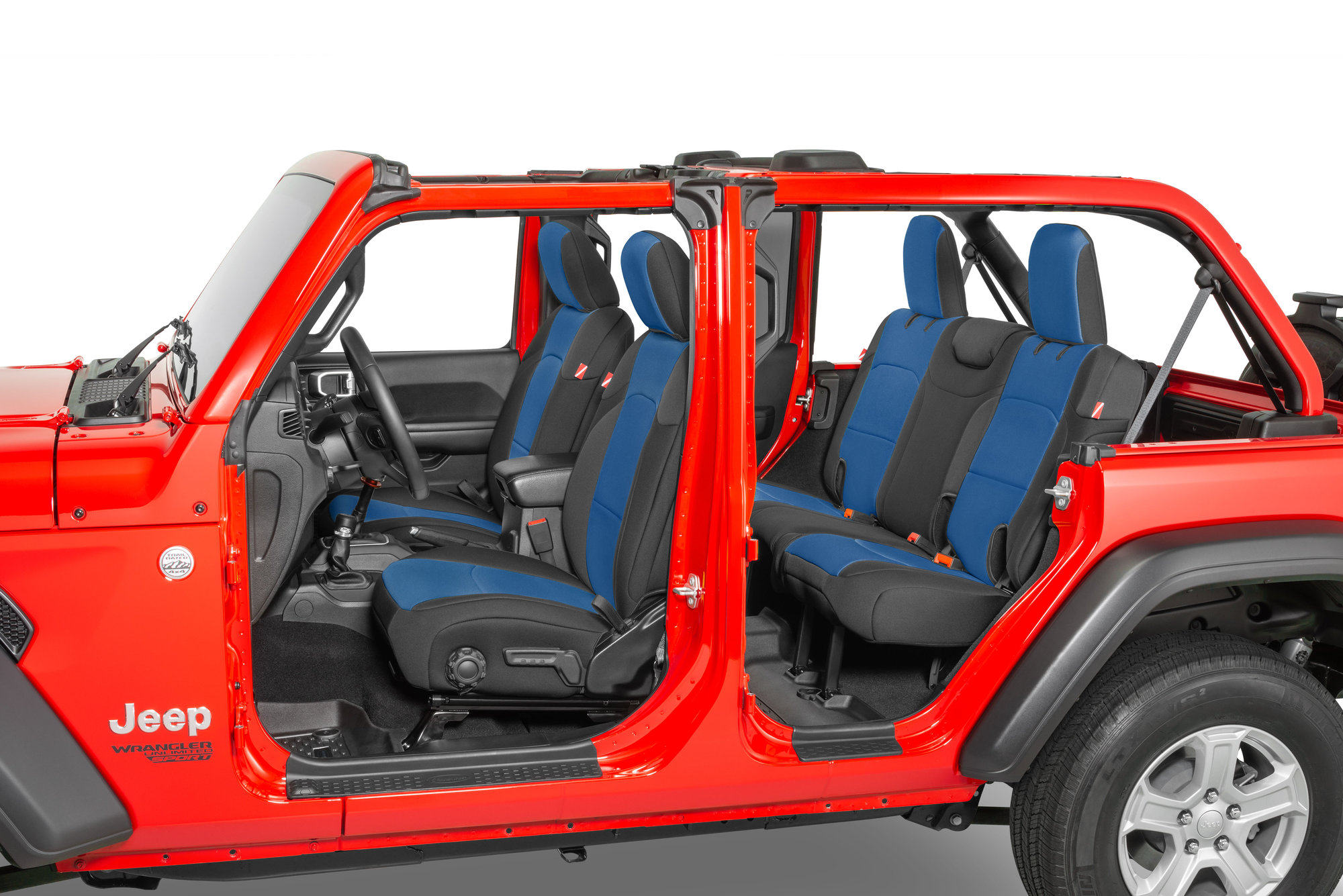
Seat Covers
No one initially thinks about covering their factory seats. Actually, the styling and fabric choice could have been one of the determining factors when you decided to take your new vehicle home. But, having a jeep with the top off or down in the sun or out in the elements when off-roading, your expensive factory seat fabric is exposed to damaging UV rays and scratch inducing mud.
In addition to protection, a seat cover like the Diver Down Neoprene Seat Covers, adds a customized look to your interior with plenty of colors to choose from to match or accentuate the color of your vehicle. These seat covers are like wet suits for your seats and can add styling and comfort to your seats.
Do you need extra storage or a place to attach bags and such to your seats, the Bartact Mil-Spec Super Seat Covers have you and your seats covered. These high-grade water-proof fabric seat covers feel like finely upholstered seats and guaranteed against fading for three years. These seat covers feature medium storage bags that attach to the seat backs. This is a great way to keep all the little things that often end up on the floor on in the cupholders or gear that you might need quick access to close. Whichever the case may be, with multiple colors, these seat covers will set your jeep apart.
And let’s not forget to cover that center console that is just waiting there soaking up all the sun’s heat just to scorch your forearm upon resting there. Most of the kits either include the center console or has a matching console accessory. It is a must have as the complete compliment to your interior.
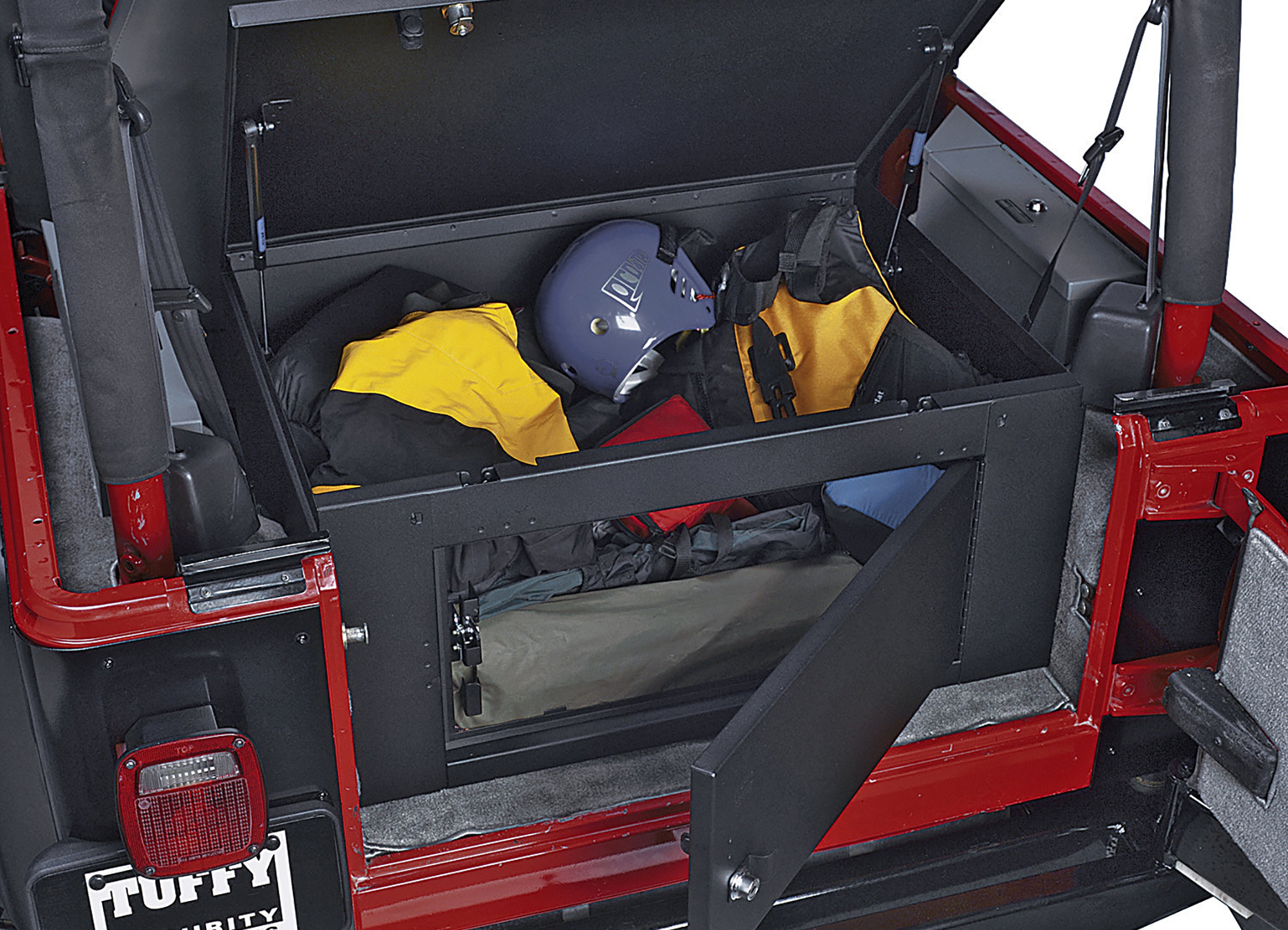
Interior Security / Storage
For decades, the appeal of owning and driving a Jeep is the feeling of freedom. The freedom of not being confined in a closed cabin in the vehicle. With that open-air, wind-in-the-hair feeling, we realize that our interior and its contents are vulnerable, and space can be at a minimum. Having a soft top even magnifies that vulnerability. The center console and glove box have a lock but that just does not give you that safe feeling with anything of value inside.
With functional storage at a premium, there are plenty of options for smaller add-on storage. The center console is deep but does not have a great deal of practical storage. The Quadratec Center Console tray will fit into the space giving another layer to place quickly needed items above the bottom of the console. Or a Grab Bar Tray as a place for your passenger to put their sunglasses or keys. There are terrific options for almost every section of the interior. There are plenty of nooks and crannies to attach some kind of tray, bag or box.
Places to put objects isn’t always just about storing those items, but more about securing those important valuables from prying hands. Lockable storage boxes are generally made from steel and designed to fit in out-of-the-way locations. One of the most convenient locations is handled by the passenger side or driver side Bestop Locking Under Seat Storage Box. This conveniently mounts under the specific front seat. Although it’s not very deep, it is a very logical solution for wallets and other valuable items. Need a larger solution for backpacks, purses, or tools? A fully enclosed box like the Smittybilt Security Storage Vault would certainly do the trick.
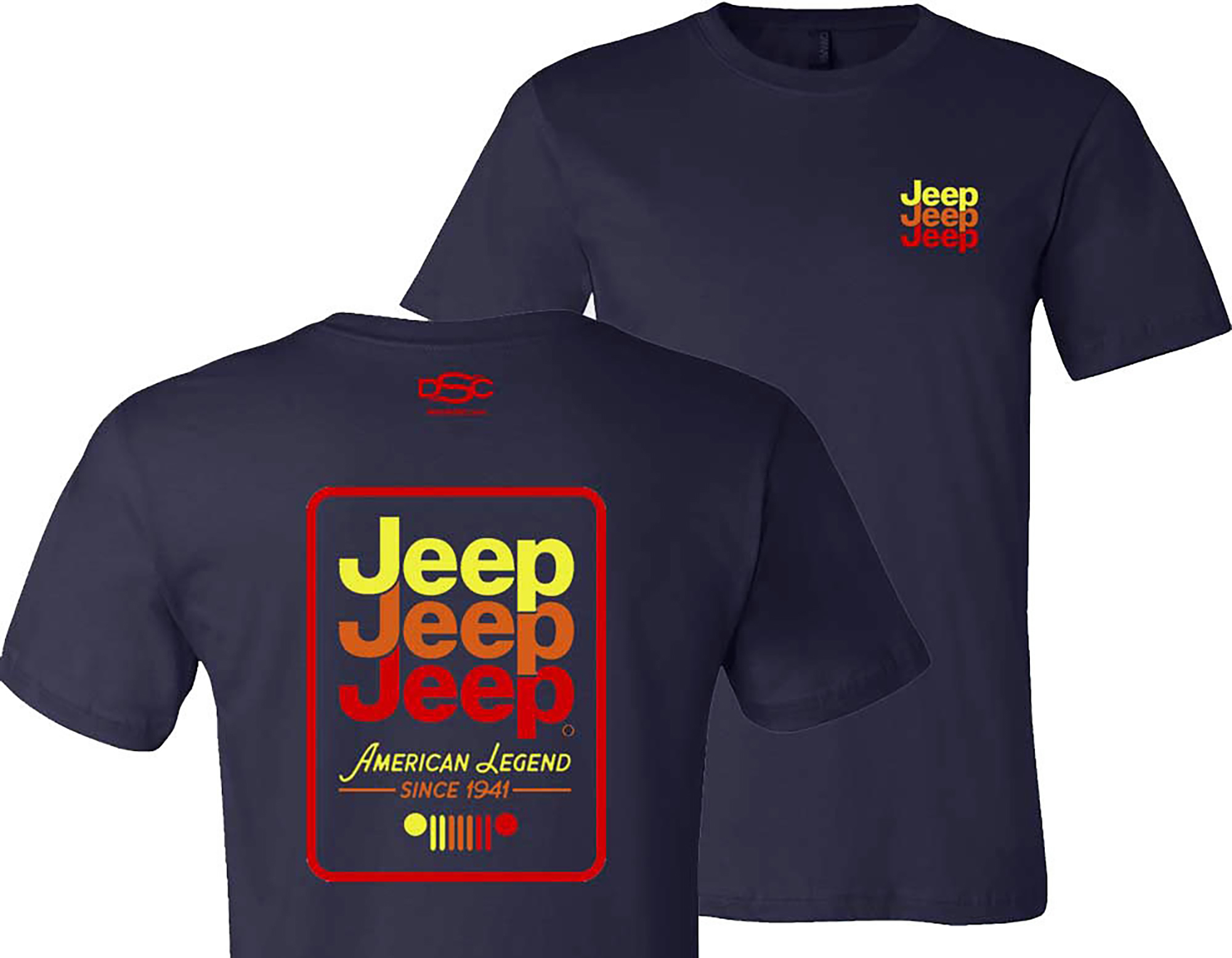
Apparel
We talk about the modifications on our Jeeps when we are new to the lifestyle. But, what about us and the modification to our wardrobe? How do we show our love for the activity and our Jeep? We want to be recognized as one of the cool people that drive the most fun vehicle on or off the road.
Well, that’s easy.
There are all kinds of Jeep-related shirts, hats and other lifestyle items. ‘Jeep hair, don’t care’ might be a fun thing in nice weather, but you might want to put a trucker hat on when you arrive at your destination.
Want to stay warmer with the top down? Then, grab a hoodie to keep in the Jeep for those special evening drives in the mountains or on the beach.












